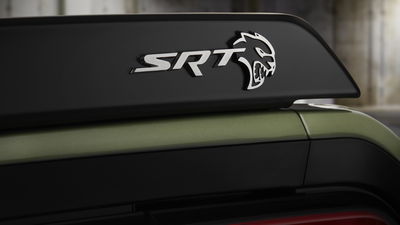3 Ways Daily Driving A Classic Car Will Make You A Better Person

Like drug users, there are two kinds of car enthusiasts: casual users and addicts. For the casual user, the drug is a luxury enjoyed on occasion in disciplined moderation. For the addict, the drug isn’t a luxury, it’s life. There is none of this disciplined moderation nonsense. There is no beige Camry in the garage; there is only the drug. The addict imbibes daily, sun, rain, or snow.
I am an addict. A heavy user. I need a fix every day. In my 15 years behind a steering wheel, I’ve never once owned a car any self-respecting authority figure would deem "responsible." My addiction grew in severity over time, and for the past decade, most of my year-round daily drivers have been classics.
Driving an old car every day is an experience; it’s more than simply good or bad, and is punctuated with soaring highs and crushing lows. But there’s a fundamental difference between daily drug use and daily driving a classic car: daily driving a classic car can make you a better person. Here are three ways vintage motoring will steer you on the path toward enlightenment:
1. It promotes human connection IRL

A classic is more than just a car; it’s a catalyst for human interaction. When you drive an old car, everyone wants to talk to you: "What year is that thing?", "I used to have one like this in college", and even "Man, you wouldn’t believe the size of the chick I had in the back seat of one of those!" (Yeah, I’ve heard that one before!)
If you want to become a better conversationalist, or even refresh a waning faith in humanity, drive a classic. You’ll meet friends, lovers, and well-wishing kooks everywhere you park it. And when you spot other classics like yours, you’ll meet comrades in arms. These relationships are important for classic car drivers.
Sure, the Internet demystified the dark art of tuning triple Weber carburetors many moons ago, but no message board write-up or 1080p YouTube clip will ever stack up to hands-on tutelage with a real human being. And IRL friends usually cut better deals on parts. If they don’t, cruise around until you meet better friends.
Driving a vintage automobile forces your focus away from the blinking touchscreen soma in your palm and sets it back in the real world. Cool stuff happens in the real world. Real cool stuff.
2. It fosters self-reliance

Driving a classic every day requires mechanical savvy; a car is no more than the sum of its parts. You may feel swaggeringly assured behind the wheel of a 50-year-old VW Kombi with a new engine and transmission but unless the old girl received a comprehensive restoration a litany of other parts remain 50 years old.
The old adage "they don’t build ‘em like they used to" is mostly true, but every moving part on a car, however heartily engineered, is subject to wear and tear. I speak from experience when I say this: if you’re not down to mend a busted accelerator cable by flashlight at 3am on the Mojave dirt roadside of Interstate 10 you have no business daily driving a classic.
Surprise roadside repairs like this may sound awful but to the prepared enthusiast they’re anything but. For crazies like us, breakdowns are opportunities to test our mettle in the wild. Wise classic drivers know which parts are most likely to fail on the road; they carry spare parts, a small tool kit, and an instruction manual. They are the Eagle Scouts of the automotive world. Some classic drivers consider a cell phone, a valid auto club membership, and a bulging wallet preparedness. This isn’t wrong, but these people are not getting the full experience.
Pulling off an unassisted roadside repair invigorates the petrolhead’s greasy soul: you feel strong, confident, and sexy, like MacGyver or Ralph Waldo Emerson. You are the Lizard King; you can do anything!
3. It teaches mindfulness

You don’t just get in a classic, turn the key, and go every day like you would a modern car. Vintage automobiles require careful attention; more than just regular lube jobs and a timing belt every 60,000 miles. For example, air-cooled Volkswagens and Porsches - even BMWs up into the early 1990s - require valve adjustments every 3000, 6000, and 10,000 miles, respectively. Neglect one of these valve adjustments for long enough on an old VW or early Porsche and you will blow a motor. Ask me how I know.
It may seem strange in this age of continuously variable valve timing and air-conditioned Bluetooth torque vectoring (that’s a thing, right?), but valve adjustments and other similar mechanical procedures were basic maintenance in the 20th century. As many enthusiasts already know, performing basic maintenance yourself contributes to a deeper functional understanding of your car and acquaints you with its unique personality.
Your classic needs you. It needs your admiration, respect, and understanding. It needs you to know its intricacies, quirks, and foibles as well as your own. And it needs your attention; it needs you firmly planted in the here and now. Out on the road, noticing a peculiar tick or howl or funky smell and stopping to investigate can - and eventually will, I promise you - mitigate a potentially costly mechanical failure. It may even save your life.

When practiced out of the driver’s seat the same mindfulness that optimises the vintage automobile experience optimises every other aspect of life. It minimises stress and worry, intensifies focus, and generally enriches the human experience. It’s like a 1up in real life! So put down that toadstool and pick up a classic. As petrolheads the world over have surmised for more than a century, the path to enlightenment is the open road.













Comments
No comments found.